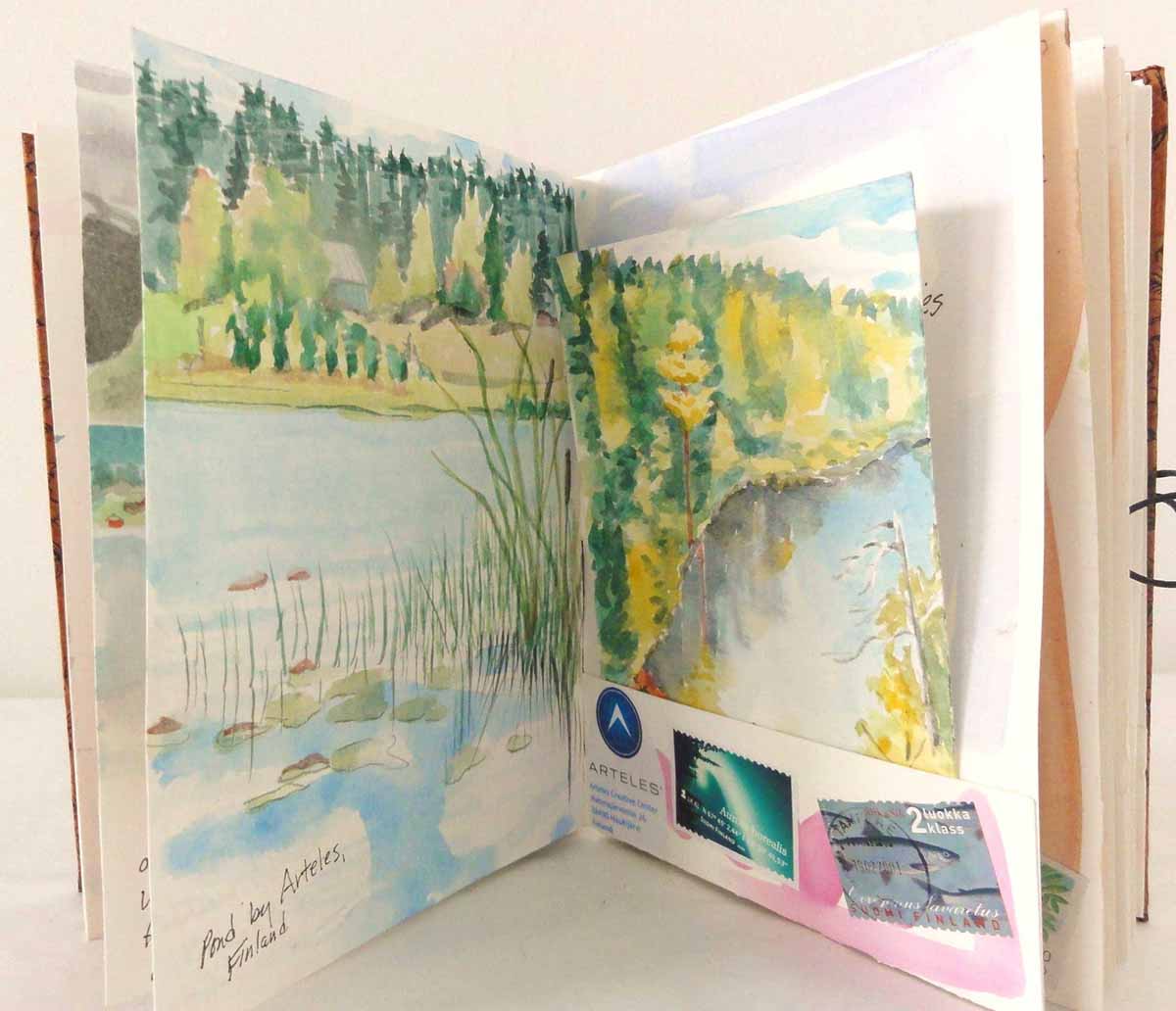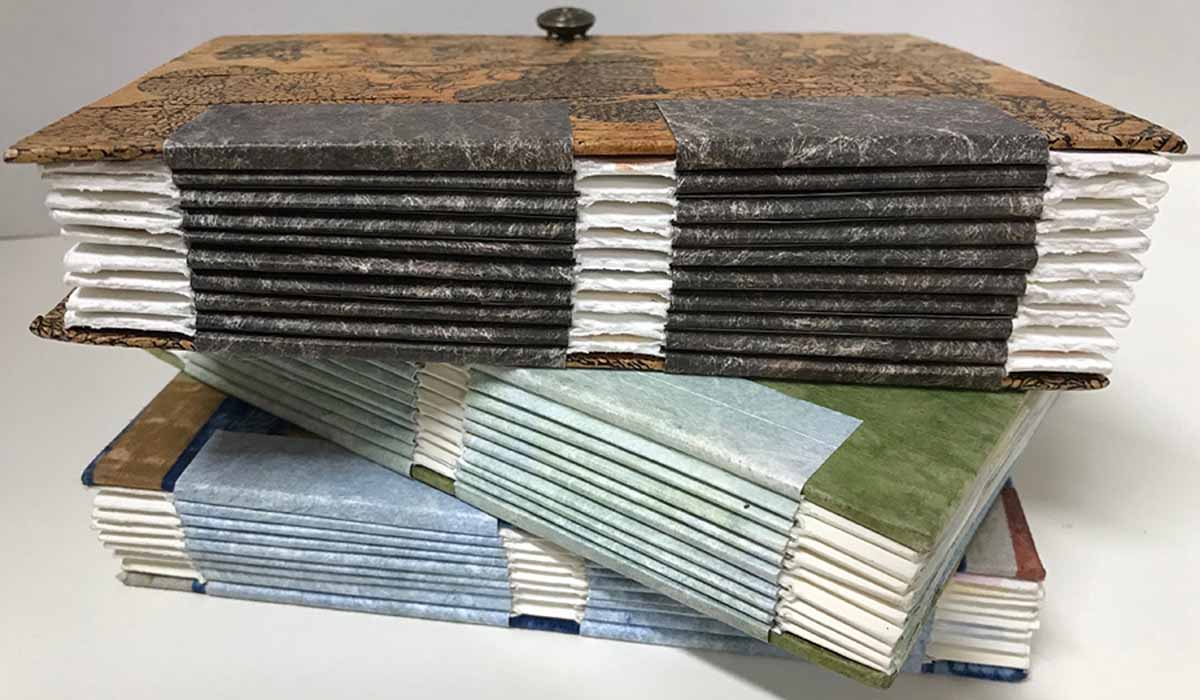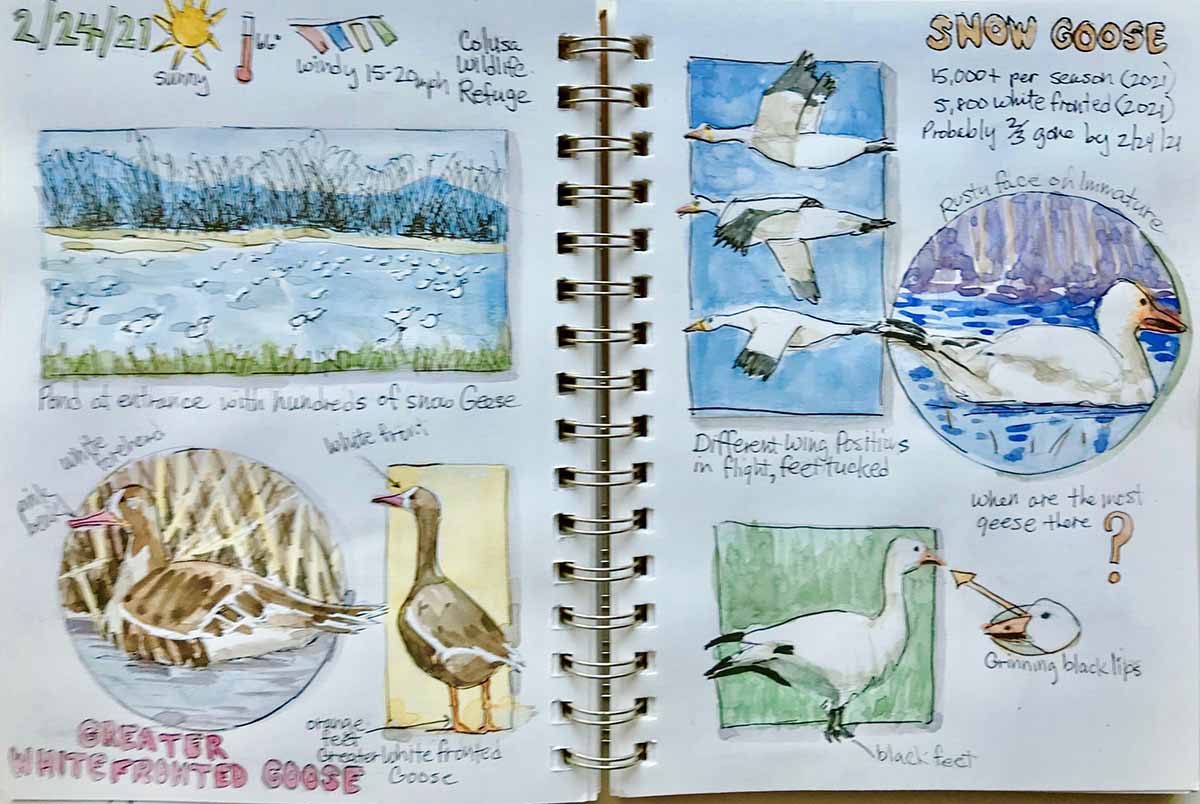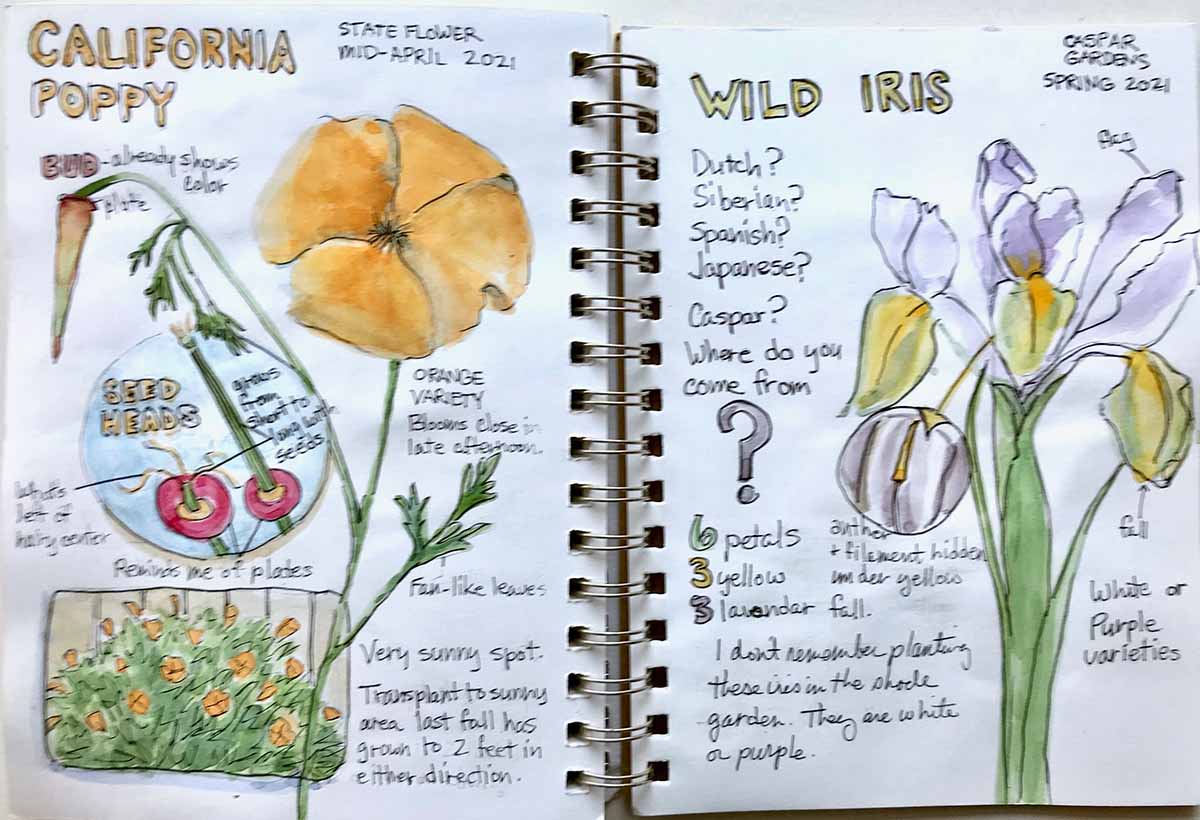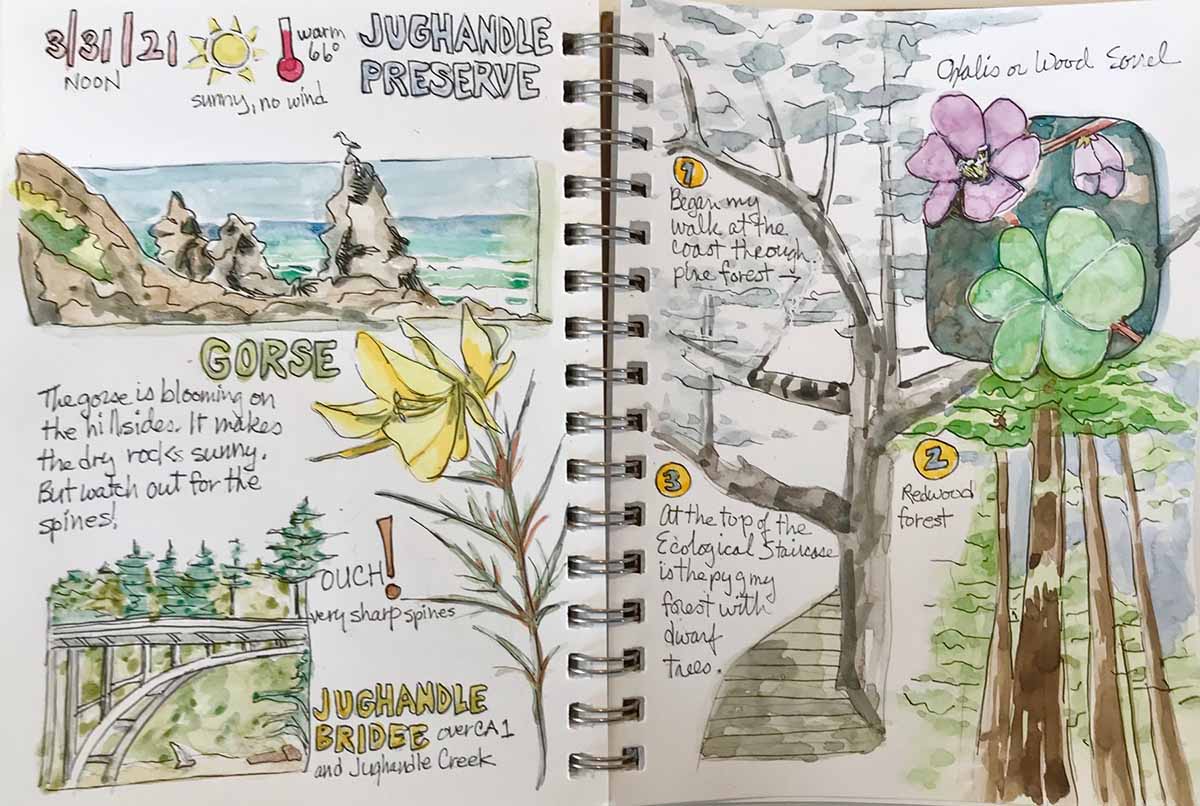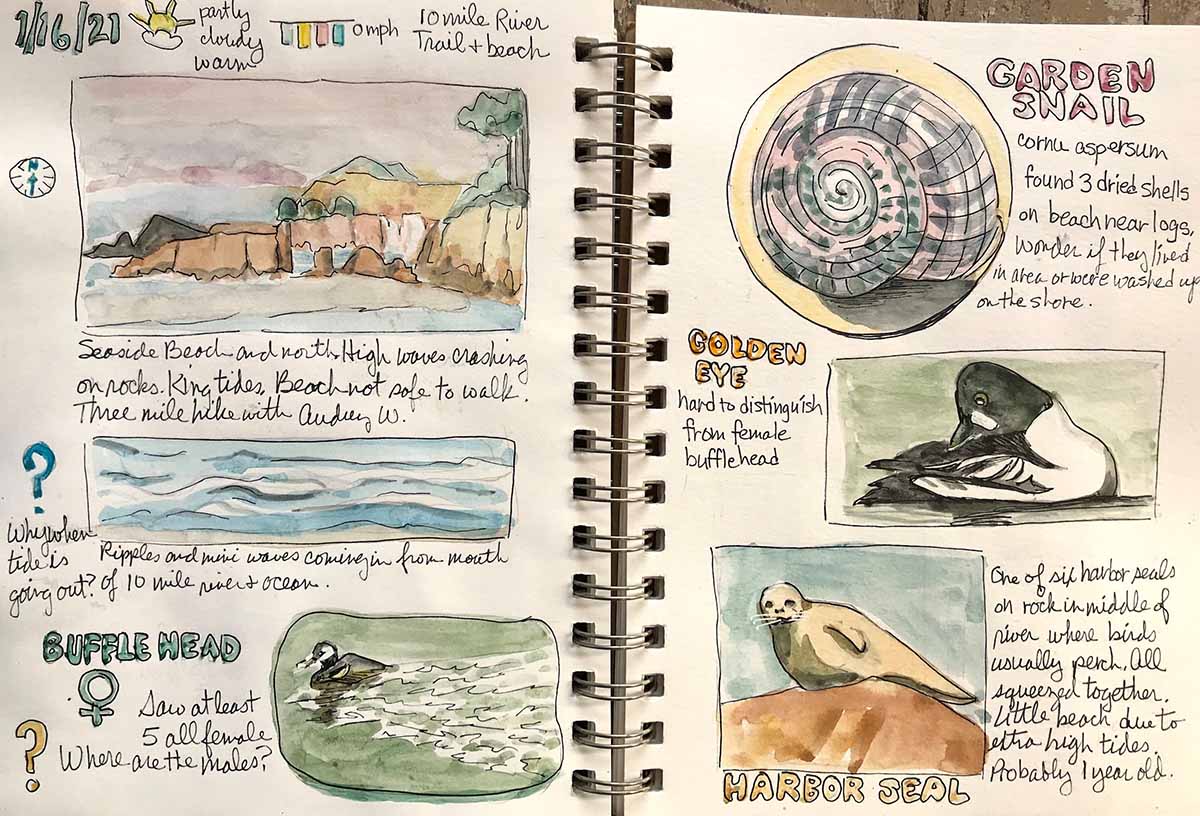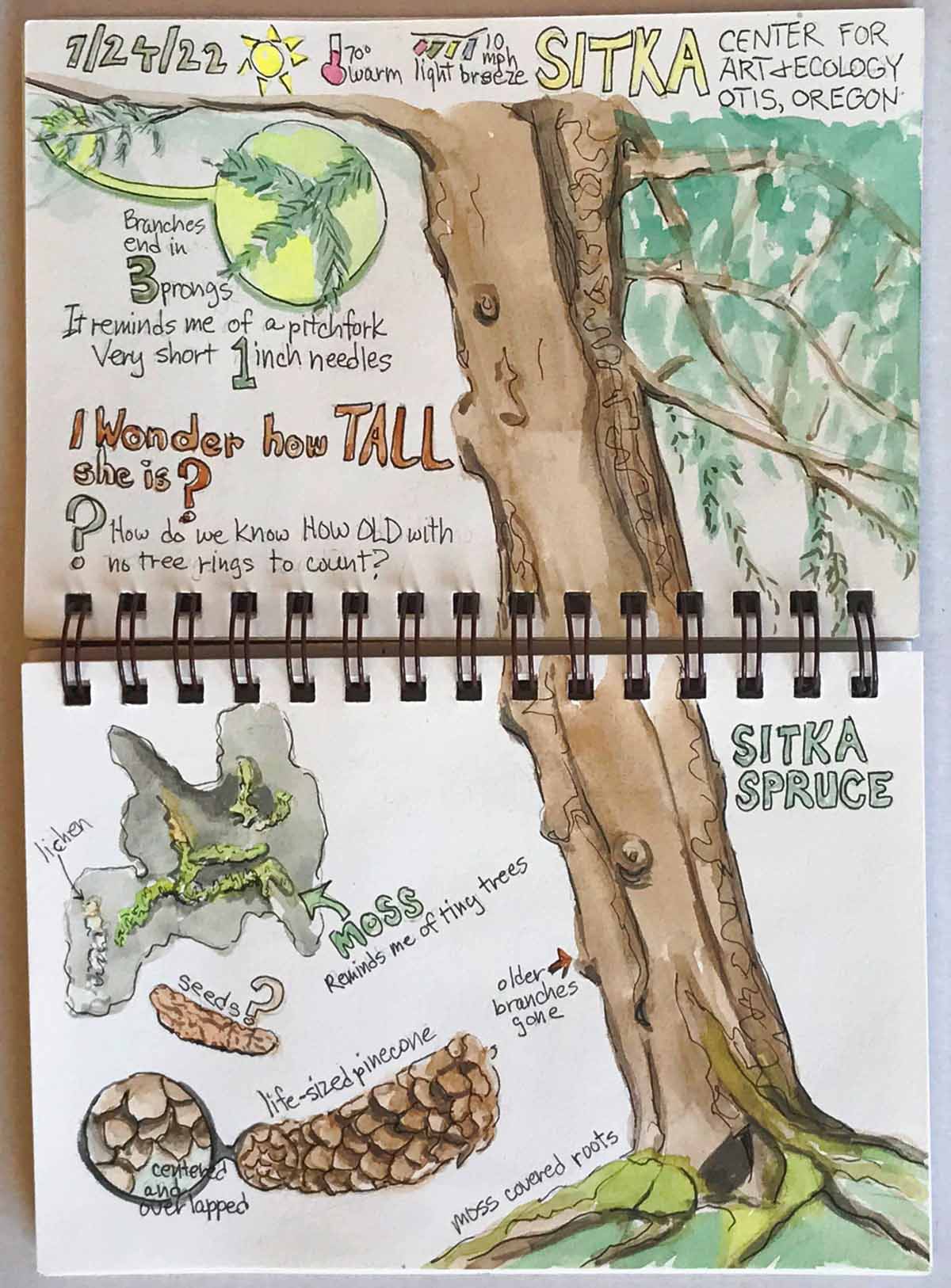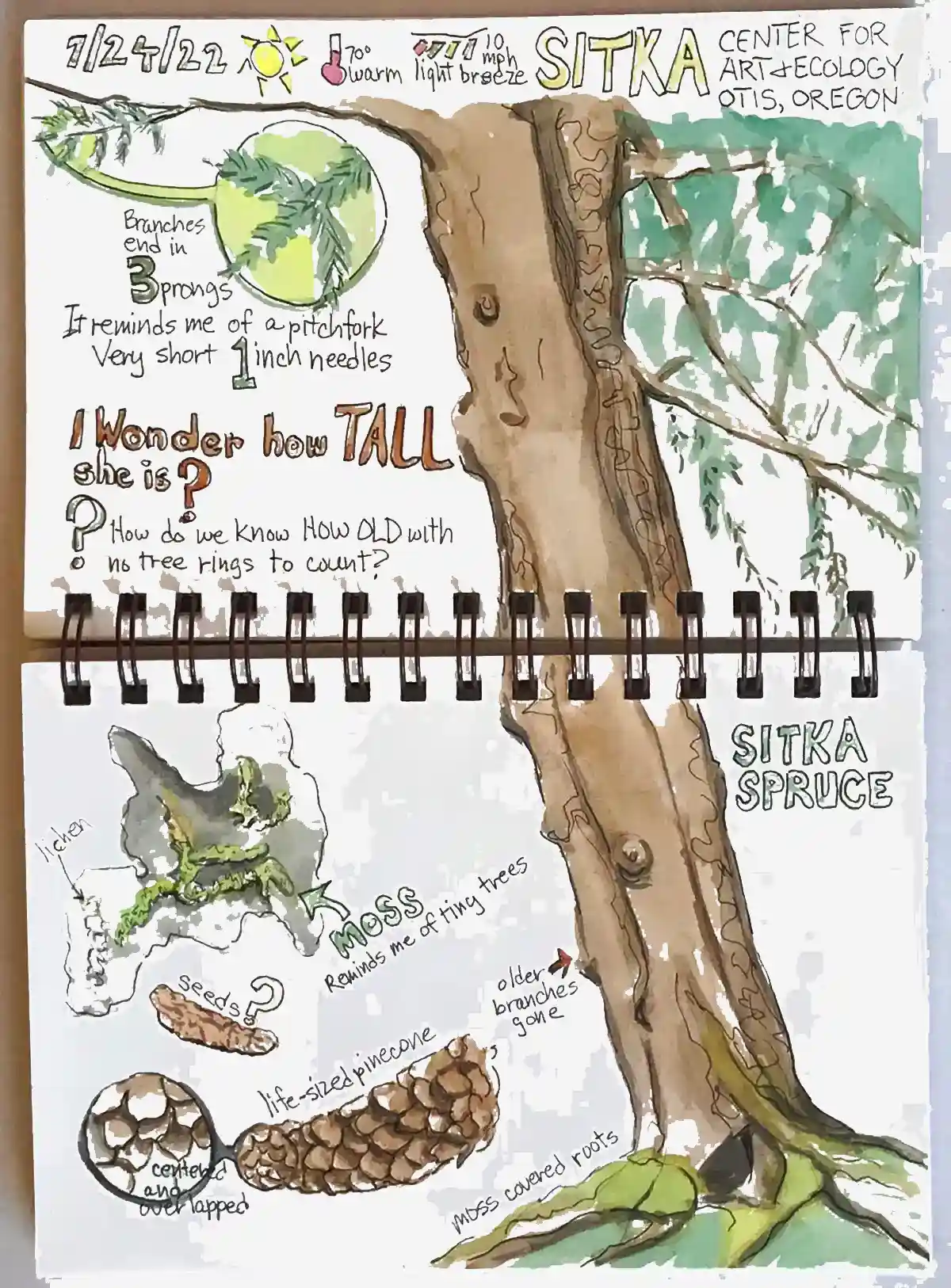Make the Perfect Nature Journal and Fill it!
Description:
We begin by constructing our own journals with various papers made for painting, sketching or writing and sections to hold field samples. The hard cover binding allows for inserting or removing pages and will lie flat when open. We will learn Nature Journaling techniques that will help you improve your observational and drawing skills gaining knowledge about your subjects. We will learn about structures of plants, observe their environments and relationships to other living things. Then move on to studies of critters that share our space and the natural environment at camp. There will be many handouts and models, layout and lettering samples, and journaling styles. You will learn basic watercolor or watercolor pencil techniques, writing prompts and then try out your new skills around the campus.
Materials:
Journal binding-The instructor will provide materials and tools making the journal.
Paints-Pre-made sets like Koi Water Colors Field box with 24 colors, water brush and palette-I’ve used for years. https://www.dickblick.com/items/sakura-koi-watercolor-sketch-box-travel-pan-sets-set-of-24-colors/ also available at Racines, Fort Bragg.
Another pan set is Windsor Newton Field Plus set that gives you 12 colors, water container and palette. https://www.dickblick.com/items/winsor-newton-cotman-watercolor-set-field-plus-set-of-12-half-pans/.
If you prefer tubes you can create a mini-kit in an Altoid metal box with pans you fill-You should have at least 3 primary colors plus white. You can create larger kits, of course. https://www.dickblick.com/products/blick-empty-watercolor-half-pans/ or I use plastic caps from milk containers that I’ve saved. Be creative.
A lightweight palette is Masters International Folding Watercolor palette for $5 which holds 20 colors that you fill from tubes https://www.dickblick.com/products/masters-international-folding-watercolor-palette/.
Brushes -#3,6,10 rounds watercolor brushes-I like Da Vinci travel brushes but they are pricey, a beginner set of these three full-size watercolor brushes like Windsor Newton Cotman would be around $20 from Blicks. You would buy individual brushes. You might also want to try a refillable water brush.
Pens: Sakura Pigma Micron Graphic 3 Pen Set-waterproof, White gel pen, Pentel or Sharpie fine point marker pens.
Pencils: Photo or light blue pencil, white pencil, #2 pencil, watercolor pencil set-I like Derwent 12 Watercolour, eraser.
Water cup with water. Since I always carry drinking water I use that to fill a small plastic cup. https://www.dickblick.com/products/plastic-palette-cups-w-screw-on-caps/. You can buy some small containers at the dollar store.
Ready-made paper or sketchbook recommendations- I prefer 8.5×5.5” mixed media spiral-bound book so I don’t get too fussy. If you like hardbound or a larger size, use it. It’s your personal choice. I recommend Strathmore 300 series Mixed Media-the cover is soft but you can add cardboard to strengthen, Strathmore Visual Journal or you can make your own journal.
I’ve used small looseleaf binders and cut, punched and placed different kinds of papers inside including lined paper for text, watercolor paper and paper that takes pencil or ink.
Rag-You can use old sock on your wrist to wipe your brush.
Mary-Ellen Campbell
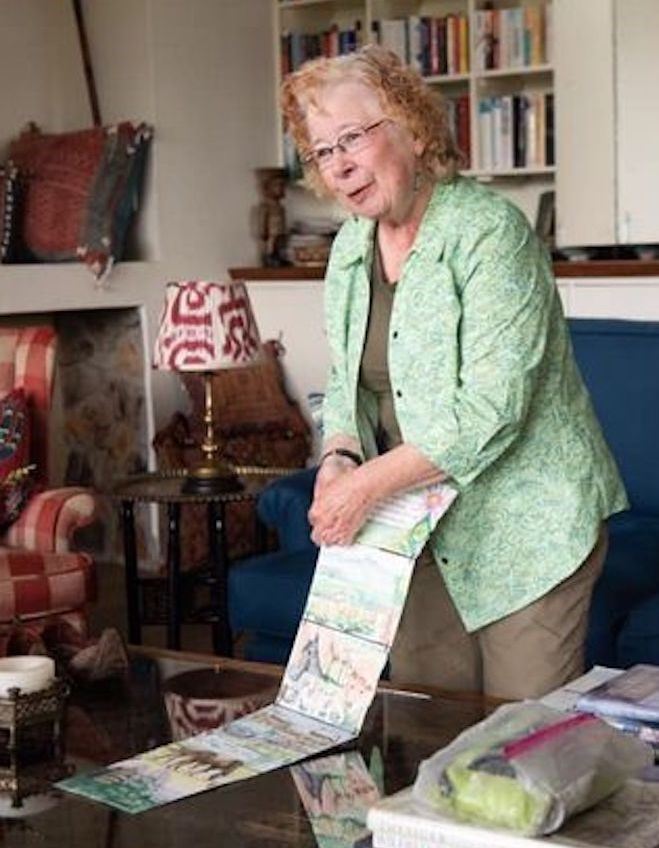
About the instructor:
Mary-Ellen Campbell is an artist/writer who moved from New York to Caspar, CA seven years ago after a two year residency at the Mendocino Art Center.
She is Professor Emerita from New Jersey City University where she taught for thirty-four years. She has taught workshops locally, nationally and internationally.
Mary-Ellen is a world traveler using her journals to capture scenes and peoples in exotic locales.
Book arts is one of her specialties and she has made most of her journals and other books while on twelve artist residencies and many trips to over eighty countries.
She is still learning the flora and fauna of the Mendocino Coast while nature journaling, bird watching, kayaking and volunteering at the Noyo Marine Center and the Botanical Gardens.

